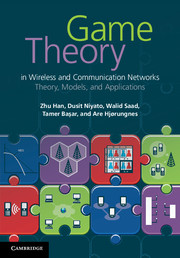Refine search
Actions for selected content:
6791 results in Communications and signal processing
11 - Subband/wavelet coding systems
-
- Book:
- Digital Signal Compression
- Published online:
- 05 June 2012
- Print publication:
- 27 October 2011, pp 313-360
-
- Chapter
- Export citation
3 - Principles of lossless compression
-
- Book:
- Digital Signal Compression
- Published online:
- 05 June 2012
- Print publication:
- 27 October 2011, pp 23-40
-
- Chapter
- Export citation
7 - Mathematical transformations
-
- Book:
- Digital Signal Compression
- Published online:
- 05 June 2012
- Print publication:
- 27 October 2011, pp 166-217
-
- Chapter
- Export citation
9 - Transform coding systems
-
- Book:
- Digital Signal Compression
- Published online:
- 05 June 2012
- Print publication:
- 27 October 2011, pp 245-264
-
- Chapter
- Export citation
Frontmatter
-
- Book:
- Digital Signal Compression
- Published online:
- 05 June 2012
- Print publication:
- 27 October 2011, pp i-vi
-
- Chapter
- Export citation
10 - Set partition coding
-
- Book:
- Digital Signal Compression
- Published online:
- 05 June 2012
- Print publication:
- 27 October 2011, pp 265-312
-
- Chapter
- Export citation
Acknowledgments
-
- Book:
- Digital Signal Compression
- Published online:
- 05 June 2012
- Print publication:
- 27 October 2011, pp xix-xx
-
- Chapter
- Export citation

Game Theory in Wireless and Communication Networks
- Theory, Models, and Applications
-
- Published online:
- 25 October 2011
- Print publication:
- 20 October 2011
Part II - Applications of game theory in communications and networking
-
- Book:
- Game Theory in Wireless and Communication Networks
- Published online:
- 25 October 2011
- Print publication:
- 20 October 2011, pp 253-254
-
- Chapter
- Export citation
5 - Differential games
- from Part I - Fundamentals of game theory
-
- Book:
- Game Theory in Wireless and Communication Networks
- Published online:
- 25 October 2011
- Print publication:
- 20 October 2011, pp 124-137
-
- Chapter
- Export citation
Part I - Fundamentals of game theory
-
- Book:
- Game Theory in Wireless and Communication Networks
- Published online:
- 25 October 2011
- Print publication:
- 20 October 2011, pp 53-54
-
- Chapter
- Export citation
3 - Non-cooperative games
- from Part I - Fundamentals of game theory
-
- Book:
- Game Theory in Wireless and Communication Networks
- Published online:
- 25 October 2011
- Print publication:
- 20 October 2011, pp 55-100
-
- Chapter
- Export citation
9 - Cellular and broadband wireless access networks
- from Part II - Applications of game theory in communications and networking
-
- Book:
- Game Theory in Wireless and Communication Networks
- Published online:
- 25 October 2011
- Print publication:
- 20 October 2011, pp 255-320
-
- Chapter
- Export citation
13 - Cognitive-radio networks
- from Part II - Applications of game theory in communications and networking
-
- Book:
- Game Theory in Wireless and Communication Networks
- Published online:
- 25 October 2011
- Print publication:
- 20 October 2011, pp 418-459
-
- Chapter
- Export citation
Index
-
- Book:
- Game Theory in Wireless and Communication Networks
- Published online:
- 25 October 2011
- Print publication:
- 20 October 2011, pp 530-535
-
- Chapter
- Export citation
1 - Introduction
-
- Book:
- Game Theory in Wireless and Communication Networks
- Published online:
- 25 October 2011
- Print publication:
- 20 October 2011, pp 1-13
-
- Chapter
- Export citation
2 - Wireless networks: an introduction
-
- Book:
- Game Theory in Wireless and Communication Networks
- Published online:
- 25 October 2011
- Print publication:
- 20 October 2011, pp 14-52
-
- Chapter
- Export citation
4 - Bayesian games
- from Part I - Fundamentals of game theory
-
- Book:
- Game Theory in Wireless and Communication Networks
- Published online:
- 25 October 2011
- Print publication:
- 20 October 2011, pp 101-123
-
- Chapter
- Export citation
6 - Evolutionary games
- from Part I - Fundamentals of game theory
-
- Book:
- Game Theory in Wireless and Communication Networks
- Published online:
- 25 October 2011
- Print publication:
- 20 October 2011, pp 138-170
-
- Chapter
- Export citation
Contents
-
- Book:
- Game Theory in Wireless and Communication Networks
- Published online:
- 25 October 2011
- Print publication:
- 20 October 2011, pp vii-xiv
-
- Chapter
- Export citation
